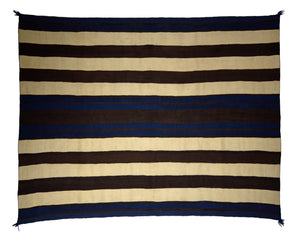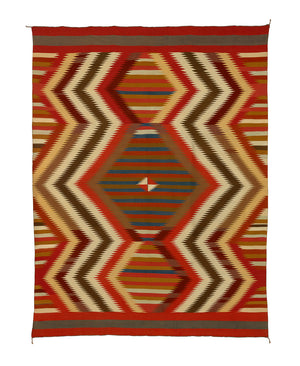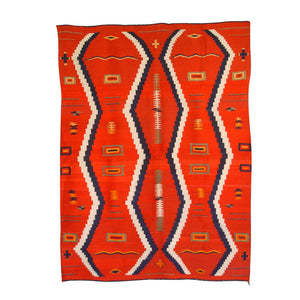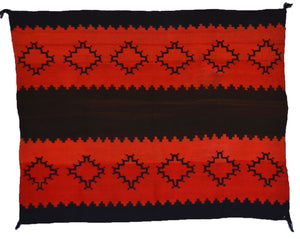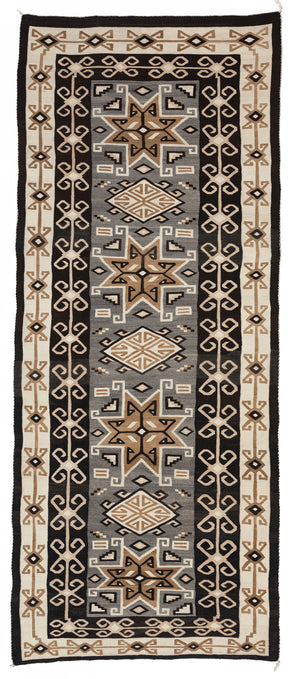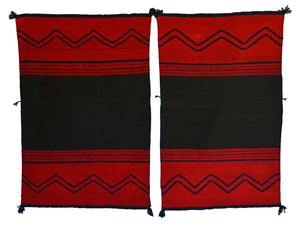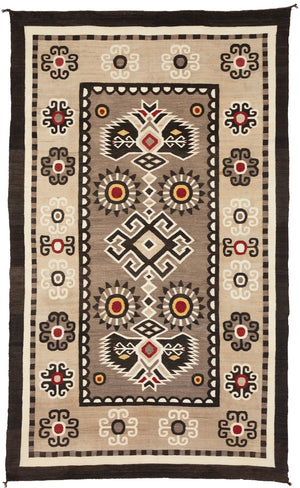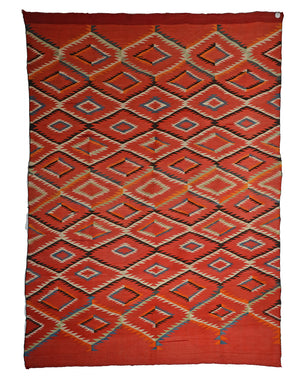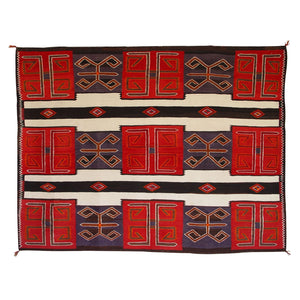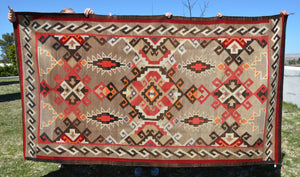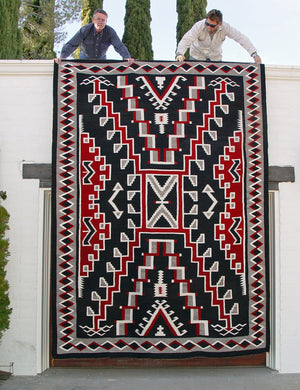- Home
- All Navajo Rugs for Sale
- Maximillian Saltillo Serape : Historic Textile : PC 264 : 46" x 88" : (3'10" x 7'5")
Maximillian Saltillo Serape : Historic Textile : PC 264 : 46" x 88" : (3'10" x 7'5")
Related Products

First Phase Chief Blanket Early Classic Ute Style : 1st Phase : Historic Navajo Weaving : 51" x 68" (5'8.5" x 4'3") Call for Pricing
This First Phase Navajo Chief Blanket is an EARLY Classic Ute. Circa 1800-1850. One of the finest 1st Phase Chief Pattern Blankets known to have been made. A rare treasure having likely survived 200 years. Your chance to purchase the best of the best! This Ute Style 1st Phase Chief Blanket is very finely and tightly woven with pure Churro wo...

Historic Navajo Serape with Spider Woman Hole: PC 258 : 57″ x 75.5″ (4'9" x 5'11.5")
$ 85,000.00
This extremely rare serape blanket was woven with Saxony. And even more remarkable it comes with a Spiderwoman hole in its center. This Serape has Indigo dyed warp, like this textile has, was only made available at Bosque Redondo and Fort Wingate to a limited number of Navajo weavers who were incarcerated for the purpose of weaving for the ...

Serape Navajo Weaving : Historic : GHT 778 : 54″ x 76″ (4'6" x 6'4")
$ 48,000.00
Exquisite serape featuring Merino wool, red background is 3 ply raveled American Flannel and Bayeta cloth. Natural dyed Indigo blue with plied yellow and orange. Greens may be plied or home spun natural dyed with rabbit brush yellow and then dipped in an Indigo blue bath. Colors are Indigo blue with plied yellow-green-orange-brown The art of p...
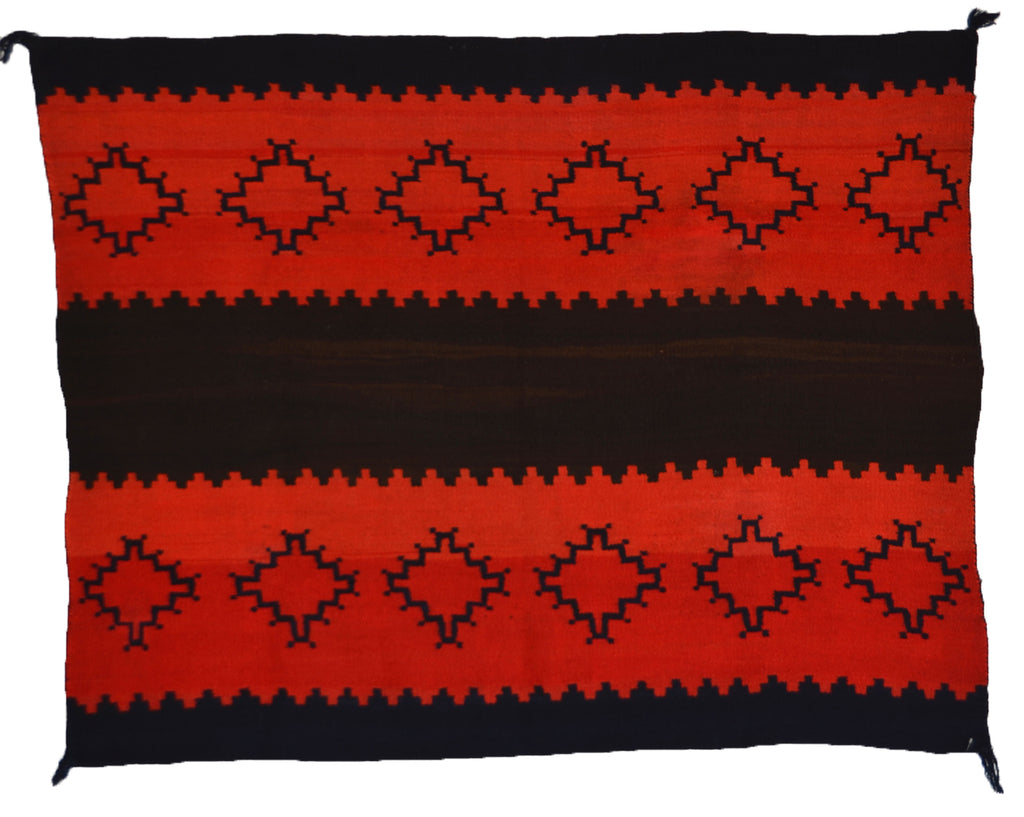
SOLD - PC 157: Classic Woman's Manta : Historic Navajo Blanket
Museum quality Classic Woman's Manta. Super Rare Example!Highly unusual Indigo Blue Warp and side cords! Also interior designs and top and bottom designs are a very deep hue of indigo blue. Red is Bayeta and American flannel. Spiderwoman cross design. Brown in center is over dyed with Sumac natural dye. Very tightly woven and in some places s...
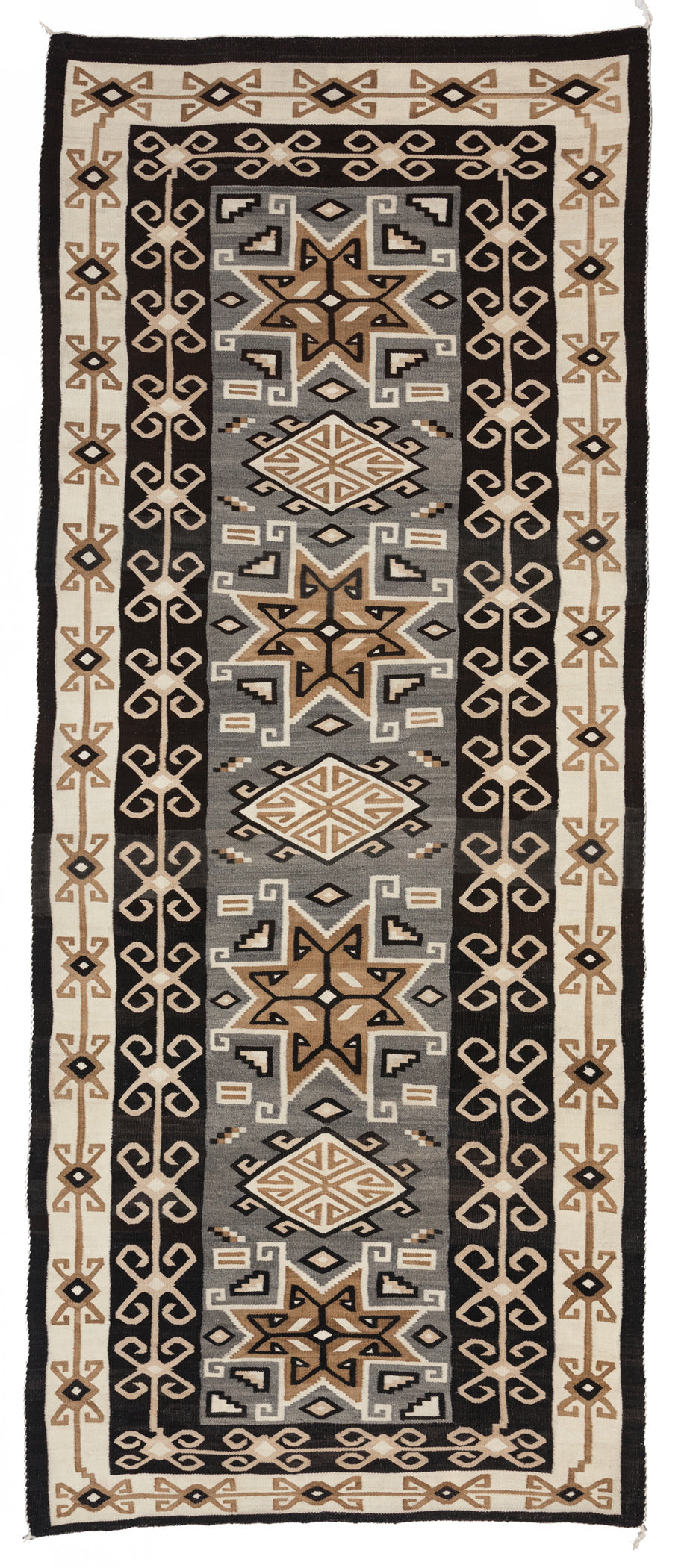
Two Grey Hills Bistie Navajo Rug : Historic : PC 103 : 49" x 122" (4'1" x 10'2")
$ 45,000.00
Two Grey Hills area Bistie runner. This is the only Bistie rug Steve has seen in a runner size. Native wool, likely Churro. Hand carded, hand spun. Extremely well woven by a Master Weaver. This weaving was part of the Timeless Treasures of Two Grey Hills Exhibit and catalog, page 25. Style Two Grey Hills Bistie Weaver Unknown Circa 19...
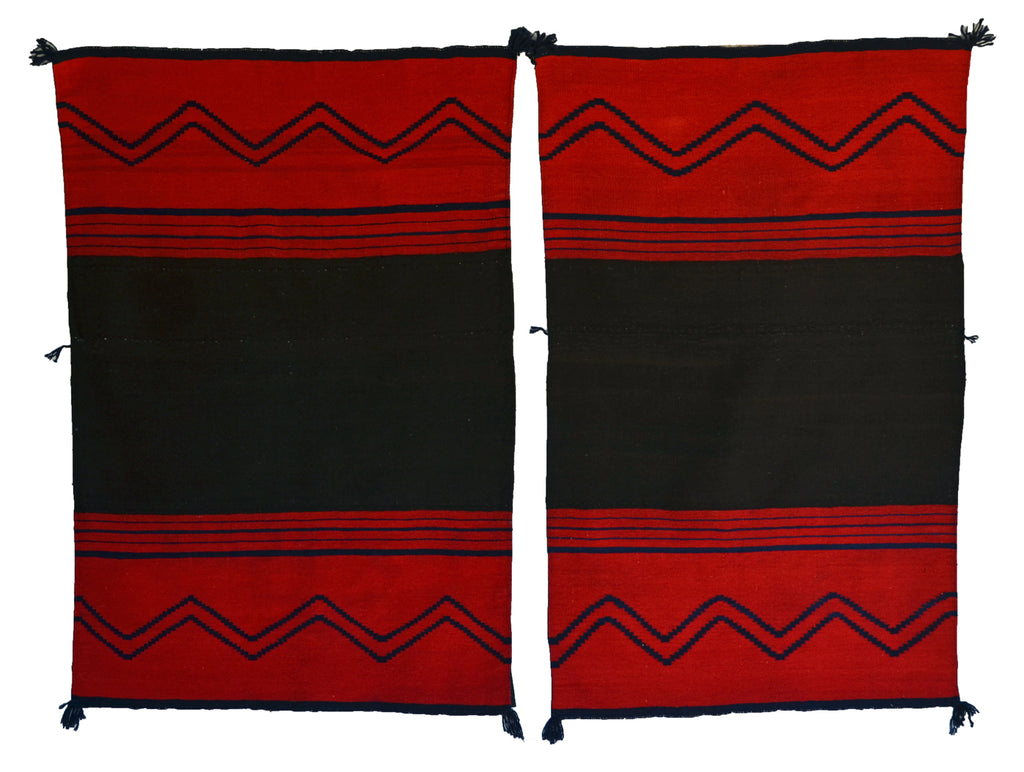
Navajo Dress Panels - Biil : Historic : PC 292 : 29" x 48" (2'5" x 4')
$ 40,000.00
Classic period Navajo Biil for sale - matching panels Very rare and in excellent condition! These Navajo Dress Panels (Biil) measure 29" x 48" (2'5" x 4'). With Lac and Indigo. Classic tie downs visible. Slight Ethnographic wear marks in the center of the panels add to the authenticity of the piece, making it a unique and valuable addition to...
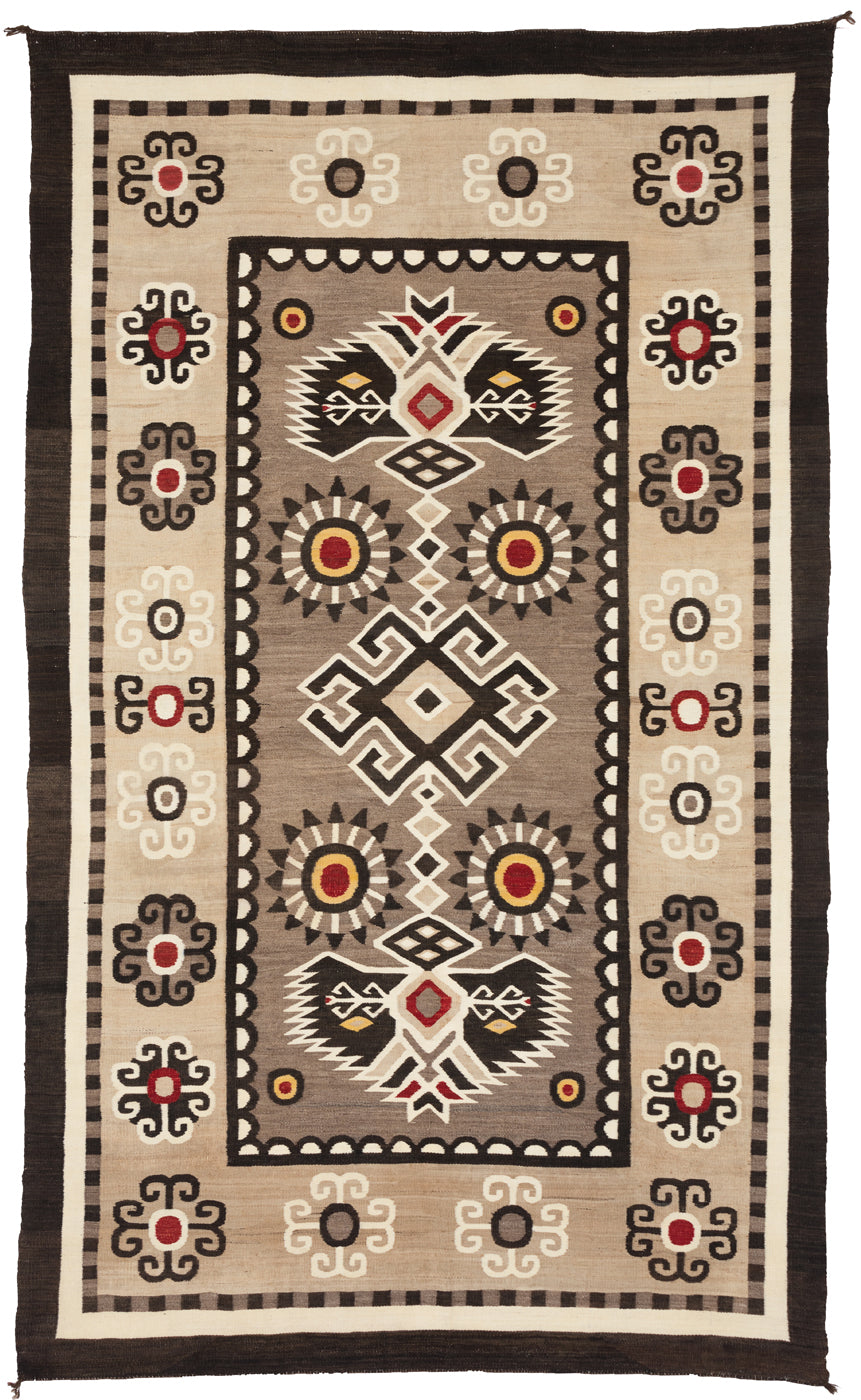
Bistie Navajo Weaving : Historic : PC 102 : 55" x 92" (4'7" x 7'8")
$ 36,000.00
Bistie Navajo rug woven using hand carded, hand spun and hand dyed Native wool. Tightly woven, curvilinear designs, eagle tail design. The red and yellow are aniline dyed. Style Bistie Weaver Unknown Date circa 1930's Size 55" x 92" Item # PC 102 Learn more about Crystal Style weavings Contact us for more information, prici...
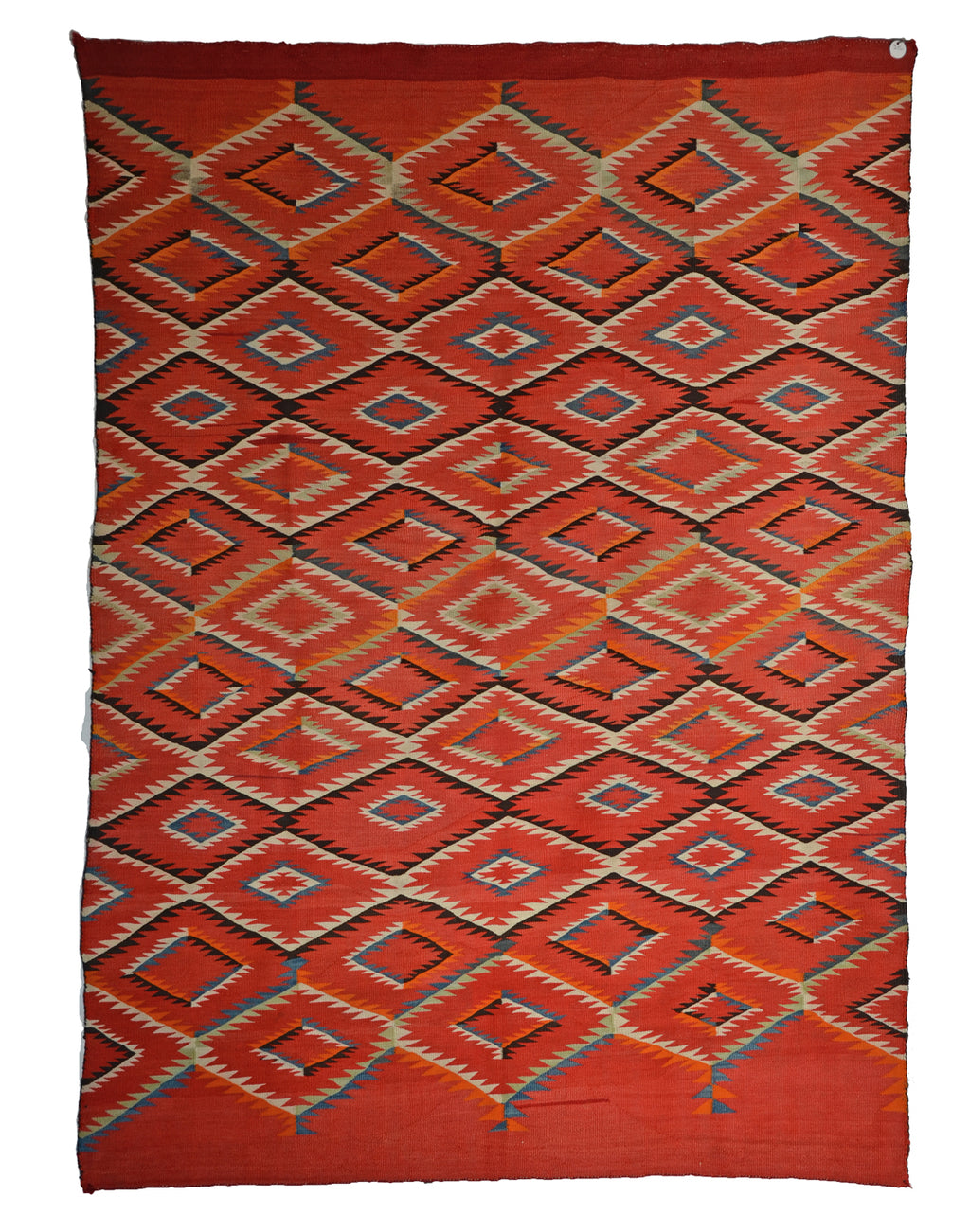
Late Classic Navajo Serape : Historic Navajo Textile : PC 67 : 55" X 75" (4'7" x 6'3")
$ 36,000.00
Navajo Late Classic Serape for sale. Red is raveled American flannel with three colors of handspun and hand dyed blue and green, rabbitbrush yellow and natural white and some Bayeta red , Merino wool. This beautiful blanket reflects Hispanic design influence. Close to Mint Condition: Slight fading on one side and the tassels are gone. S...
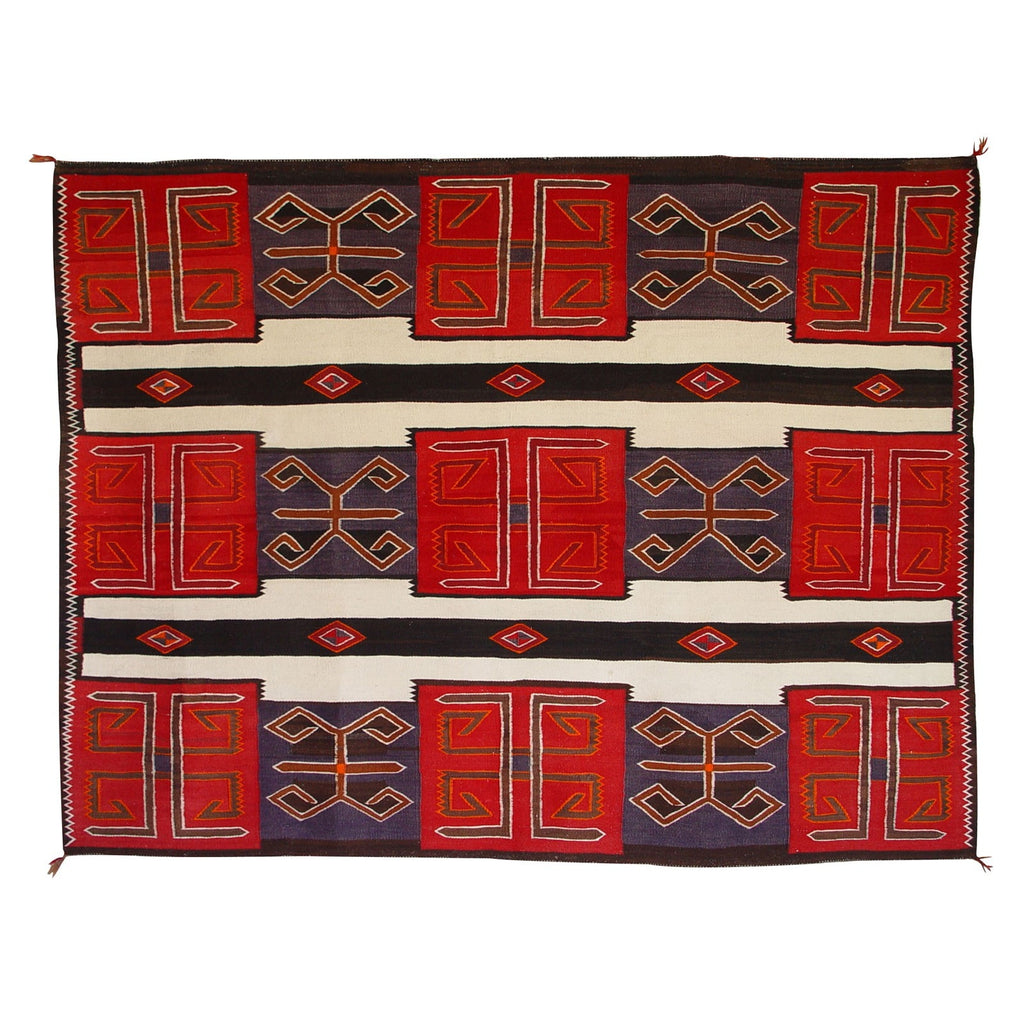
3rd Phase Chief Blanket : Historic : GHT 2126 : 57″ x 77″ : (4'9" x 6'5")
$ 36,000.00
3rd Phase Chief Navajo blanket. This captivating 3rd Phase Navajo Chief Blanket is done in a Red Mesa/ Teec Nos Pos Pictorial Style. The colors in this piece are brown, black, white, red, and indigo/purple. They work well together to make this vibrant piece come alive. Style Chief Blankets Weaver Unknown Navajo Date circa 1920-30s Size...
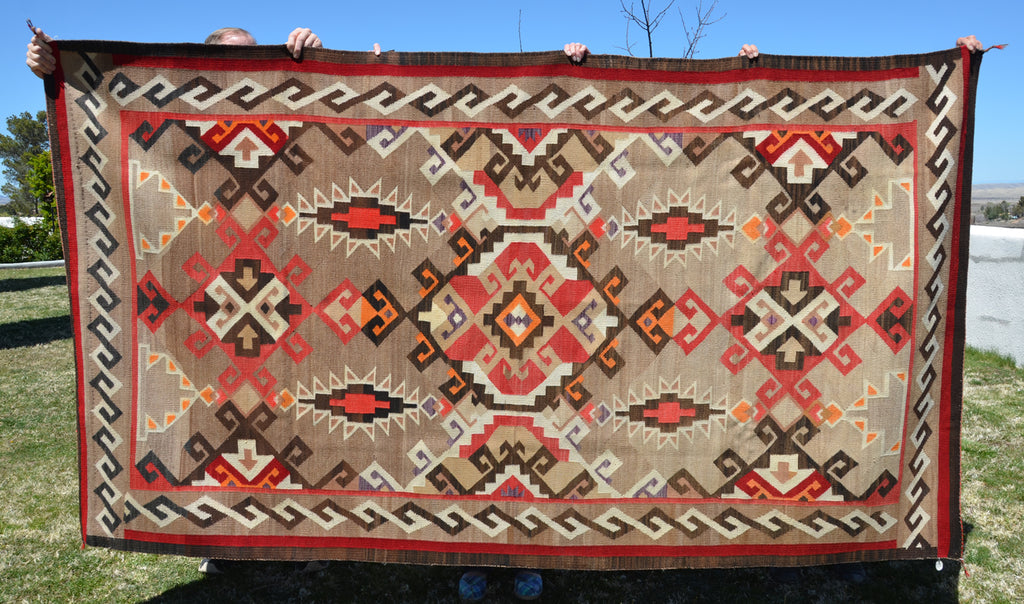
Bistie / Burnham Navajo Weaving : Historic : GHT 40 : 60" x 106" (5' x 8'7")
$ 34,000.00
Vintage 1920s Bistie style Navajo weaving in gorgeous browns, orange, white and unexpected purple accents. It's in excellent condition! Woven with hand carded, hand spun, hand dyed native wool. Aniline dyes and native wool colors. Bistie translates to Badlands by the Navajo. This design was recently recognized as its own distinctive style. It'...
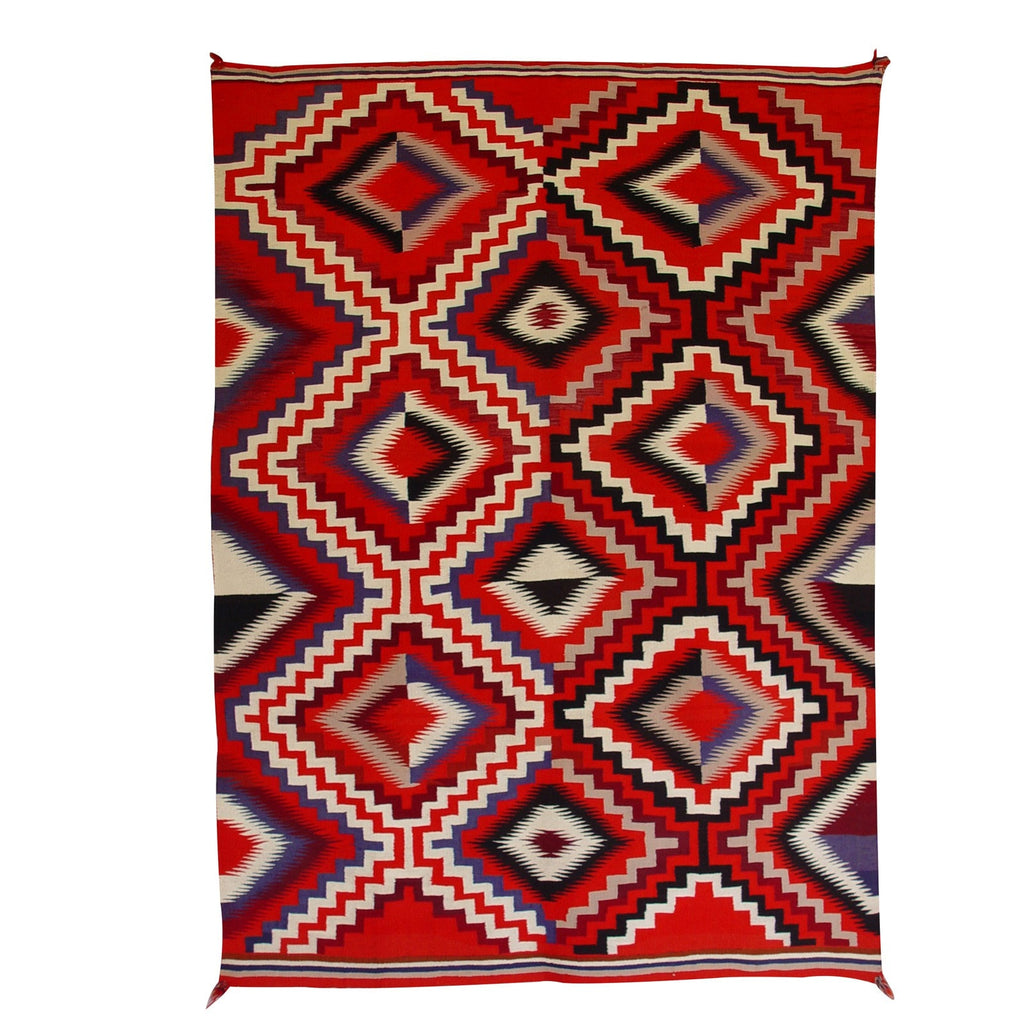
Germantown Optical Navajo Weaving : Historic : GHT 2203 : 49 1/2″ x 68″ (4'1.5" x 5'8")
$ 33,000.00
Germantown Navajo Rug. Germantown yarn (from Germantown Pennsylvania area) was first introduced to the Navajo at Bosque Redondo, so the women would have some material to weave their highly prized rugs. The Navajo Indians were allowed to return to their reservation (1868), where the weavers continued to use the popular Germantown yarns because t...
Crystal / Storm Pattern Navajo Weaving : Historic : GHT 624 : 102" x 138" : (8′6" x 11'6")
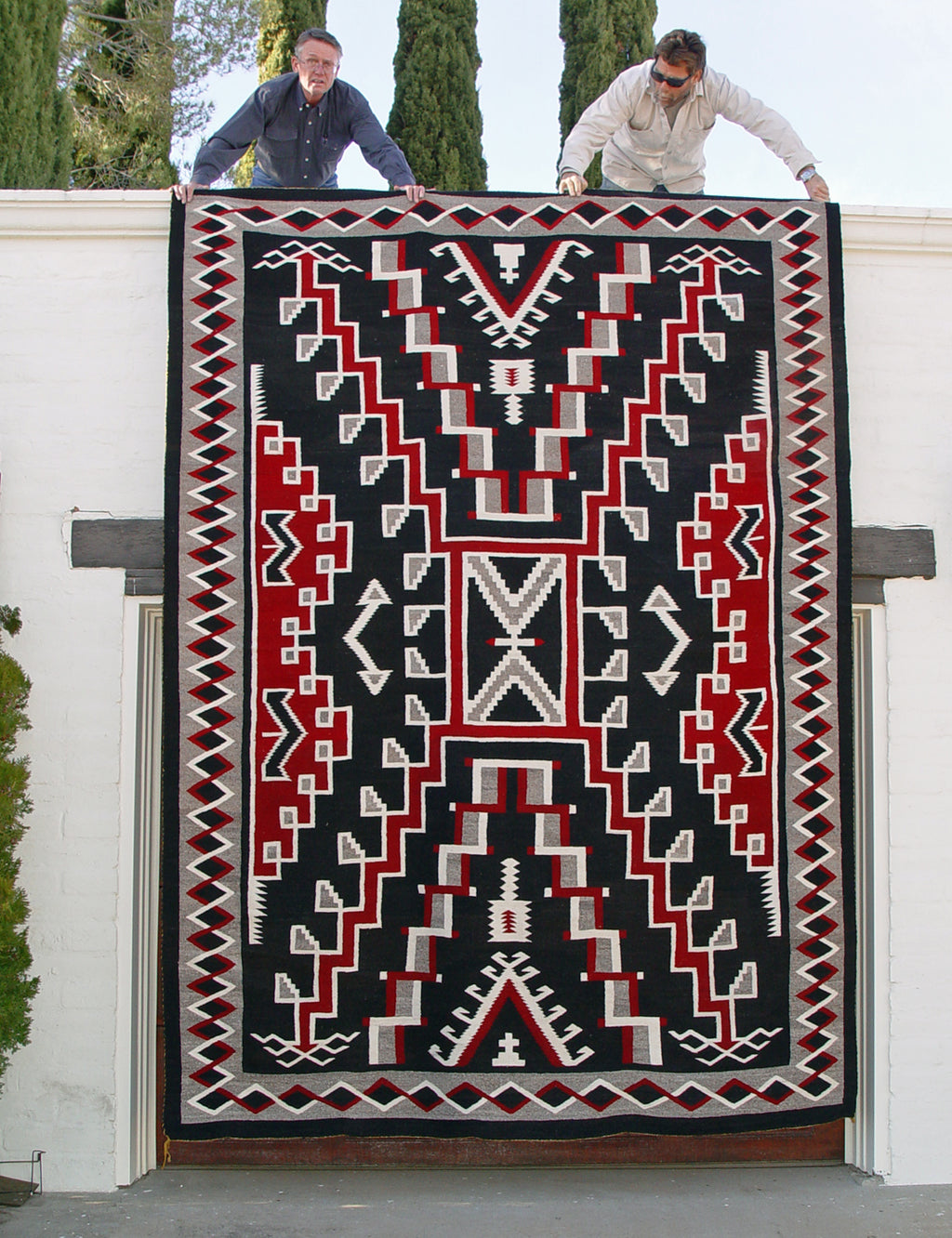
Crystal / Storm Pattern Navajo Weaving : Historic : GHT 624 : 102" x 138" : (8′6" x 11'6")
$ 32,500.00
Crystal Storm Pattern Navajo Rug. This BEAST of a weaving was made in the 1930s and is excellent in color, condition and quality. Stylized gray squash blossoms hold tightly to the four bolts of lightning which move to and from the central design. This Navajo Rug is all hand spun and hand dyed. Very heavy. Would make a great floor rug or gre...





